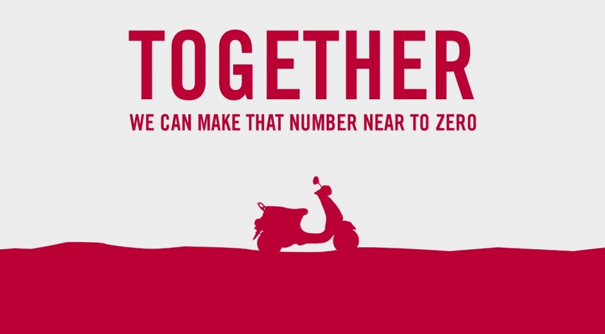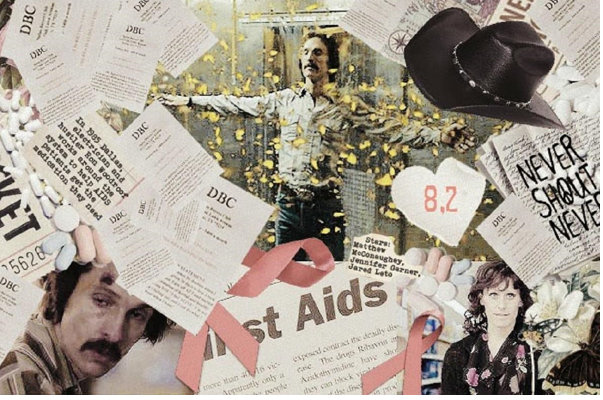Media and its HIV/AIDS Takes
Acquired Immunodeficiency Syndrome (AIDS) is the result of infection by Human Immunodeficiency Virus amongst humans. The diseased is known to spread primarily through unprotected sex, blood transfusion, injection of needles, and to children during pregnancy, delivery, and breastfeeding. It is feared due to a prolonged period lacking any form of signs or symptoms. The medicine industry is struggling to discover a vaccine for cure, as, currently, an anti-retroviral treatment is prescribed post-diagnosis.
Considered a pandemic, AIDS has caused deaths of more than 32 million deaths globally (in a span of about 40 years). In the year 2017, almost 88,000 Indians were diagnosed with HIV, over 11 percent of which were under the age of 15. It is estimated that 26 million Indians are currently living with the disease, making it a nation with the third highest infected population.
Besides physical symptoms that the infected persons face (including fever, tiredness, lymph node enlargement, and other infections), they are victims of discrimination and dissolution from society and even their own families. An aggressive stigma is associated with HIV positive people and they are left to fend for themselves – often in shelter homes. It is the unawareness regarding AIDS that drives people to believing in misconceptions and misbeliefs. Originally seen as a “gay disease”, it has now been understood that HIV does not distinguish between sexual orientation.

It is believed that education and awareness are two pillars acting as vaccine against HIV. One of the most obvious roles of media is to open channels of communication and foster discussion about the disease and interpersonal relationships. Mass media acts as an instrument to break the silence and create an environment that encourages an open discussion of how individuals must act. Media campaigns have also focused on the need to overcome prejudice and encourage solidarity with people who are affected by HIV. Mainstreaming an HIV-issue programme ensures that the message permeates a diverse range of output. People who might not pay attention to specific programmes are nevertheless exposed to educational messages. Documentaries, news, radio, newspapers, magazines, concerts, public service announcements, competitions, social media, books and websites are often used as tools to reinforce awareness.
Time and again broadcast media have proved to be efficient in reaching and influencing the young especially, who represent the future. Numerous media organisations are rising to the challenge by educating listeners and views regarding facts of HIV/AIDS and its prevention. In a survey carried out, more than 70% of the Indian respondents claimed to have received information about AIDS via television. We must seek to engage this powerful tool that the media is, in the fight to halt HIV/AIDS through awareness, prevention, and education. Collaboration between broadcasters, grass-roots organizations, service providers and government agencies aid in ensuring that vital services, such as counselling, testing, providing condoms, treatment, and care, are available on the ground.

The first case of AIDS in India was detected in 1986 amongst sex workers of Chennai. The virus has proven to be group-specific, meaning that vulnerabilities vary on different levels Prevalence of HIV is generally higher amongst men as compared to women, which is probably due to MSM (men who have sex with men), migrant workers, and drug users. Of the infected, people who are at most risk have been found to belong to the age group of 15 to 24 years.
After the detection of the first case in India, an advertisement starring Shabana Azmi was broadcasted on Doordashan. In order to eliminate the misconception about spreading of the virus, the actress sat next to an AIDS patient, put an arm around her, and claimed “Chhoone se AIDS nahi hota. Chhoone se sirf pyaar phailta hai.”
In the early 2000s, NACO and BBC World Service Trust joined forces to launch a mass media campaign aiming at increasing AIDS awareness. Information was spread along with a popular detective-based thriller series “Jasoos Vijay”, where the lead was portrayed as HIV positive, tacking discrimination. By integrating awareness with entertainment, the act proved to be effective as 85% of a survey’s respondents revealed to have learnt something new.
Soon, another iconic ad campaign took over radio stations, television channels, and billboards. The ad highlighted the importance of condom use in order to avoid transmission. Ads revolved around a fictional man, Balbir Pasha, who was a part of several conversations asking “Will Balbir Pasha get AIDS?” The message through the campaign was simple and directed towards sex workers and those who visit them – if one visits only one worker multiple times, they must still use condom. The success of this campaign was reflected in the three-fold increase in condom use amongst sex workers and those visiting them.

In 2005, PM Manmohan Singh oversaw a meeting of top media executives from across India, the first national Media Leaders Summit on HIV/AIDS.
The National AIDS Control Organisation (NACO) has put forward great efforts regarding awareness on use of condoms to prevent transmission. India’s Condom Social Marketing Programmes promote safe sex by making condoms available for free in remote and rural regions of the country. NACO’s promotion campaigns were launched on TV channels and radio about six years ago. Soon afterwards, they spread to platforms like digital cinema, social media, and outdoor media.
Campaigns like End AIDS India https://www.endaidsindia.org/ by Alliance India are designed to create awareness and mobilise resources to fund HIV response programmes in the country. It aims to accelerate the response towards the endemic and envisions a society where those affected and those vulnerable lead a healthy and stigma-free life.
A study of two major English language newspapers in India – Times of India and Hindustan Times – revealed their sustained attention on openly discussing AIDS-related stigma and discrimination. Moreover, articles also construct a stigma-resistant narrative of how courageous and dedicated have and still continue to confront and counteract stigmatization.

Social media platforms are being used increasingly as part of HIV prevention and treatment efforts. Social media offers a neutral platform for engagement amongst people – individuals seek and share information about prevention and support.
HIV/AIDS pandemic remains one of the greatest health challenges faced by the world in today’s time. Media is one of the strongest tools by which we can put a step forward to end discrimination and stigma against the syndrome.
Author

